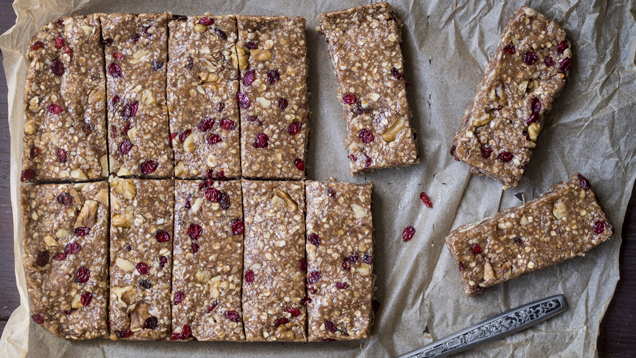How to properly diet
 CREDIT: SOHADISZNO / THINKSTOCK
CREDIT: SOHADISZNO / THINKSTOCKMaking your meals for the week on Sunday rather than sleeping in can help you stick to a healthy lifestyle. You can even make homemade granola bars that are yummy to snack on and prevent you from eating preservatives.
March was nutrition month. Good nutrition is actually simpler than you think. What makes nutrition complicated is you and your behaviours, beliefs, lifestyle and current state of health. The world complicates good nutrition further with all their promises, and people around you may not understand or be supportive. Here are some simple nutrition rules to follow that can help you get on to a path of a healthier lifestyle.
Eat whole foods first.
This means eating the natural part of the plant (vegetables, grain, fruit, oil, etc.), meat and eggs. You can liven up your diet with other whole foods, including herbs and spices. Depending on how you feel about milk or milk alternatives and the dairy products made from them, you can consider them as part of your whole foods diet or see below. Supplements are secondary and only work well with a healthy diet. Your doctor, naturopath or dietitian can advise you on which ones you need based on screening; you should never take supplements unnecessarily, as they can have serious side effects.
Eat as little healthy processed foods as possible.
Even whole grains or all natural versions of whole grains may be missing things you need (such as fibre or protein), or they may contain things you don’t need (such as sugar or salt) to make it taste better. Processed foods include juice, sauce, cereal, pasta, breads, dips and condiments. Basically, if it comes in a package of some kind and has more than one ingredient, it has been processed in some way. These still have a great place in your diet but we don’t always need much in terms of portions.
Read and compare nutrition labels.
Look at the ingredient list; items are listed in order based on their volume (for example if flour or sugar are listed first, that is what the majority of the product contains).
Next, look at the label. This tells you the basic information based on a certain serving size. Make sure you know how much that serving size really is. Typically, most labels only have room for certain vitamins and minerals, including sodium, iron, calcium and vitamin A and C. There are many other vitamins and minerals that could have a higher concentration than what is listed, and you may need to use an online source or ask the manufacturer.
Check out healthycanadians.gc.ca for a healthy Canadian nutrition label quiz or use the Canadian Nutrient File to help you find information not listed on the package at webprod3.hc-sc.gc.ca.
Drink water.
It’s simple, you need hydration, and water is your best bet. If you have to drink juice, make sure it’s 100 per cent natural (no other ingredients other than fruits or vegetables), it’s not from concentrate and it doesn’t contain added sugar.
If you have to drink coffee or tea, limit the caffeinated versions to one to two cups and try caffeine-free herbal teas instead and switch from heavy creams, butters and sugar to small amounts of honey, lemon and low fat milk. Limit alcohol to one four to six ounce glass a day, including wine and beer as these calories add up quick and provide little in terms of benefits.
Eat when you’re hungry.
Eat small amounts. While your stomach can expand and hold as much as two to three litres of food, your satiety level can be reached with just a quarter of a litre.
If you eat on a regular schedule each day, generally you will be hungry at those same intervals. There is also no need to make yourself eat before a social gathering or going to the grocery store, unless you are truly hungry. Most people wind up eating about the same amount of food and therefore overeat. You should never eat so much that you feel sick or have to unbutton clothing around your waistline.
Plan and prep healthy meals and snacks every week.
Make healthy eating as convenient as possible, and instead of sleeping in on Sunday, get up and make soup, salads and homemade granola bars. Plan your grocery list for the meals you will need for that week and meals to get you started in the following week. Make a list on your fridge of all the healthy meal options you can cook and make something different for dinner at least every night for two weeks, at least six to seven different lunches, four to five different breakfasts and many options for snacks or to-go meals.
Out of sight, out of mind.
Get rid of unhealthy things; don’t buy it on your regular grocery trip, even as a treat. You can make treats out of healthy options and think of other ways to treat yourself. Check out sparkpeople.com for 50 nonfood treats.
If you must indulge, pick a specific time and stick to it.
For example, only eat a small piece of cake on birthdays. The more healthy eating you do, the less you will want unhealthy options. When you eat things in excess or too often, such as salt, sugar or fats, you crave them more. Healthy eating will help to put your hormones and cravings in balance and you’ll know it’s working when you find unhealthy options less desirable.














